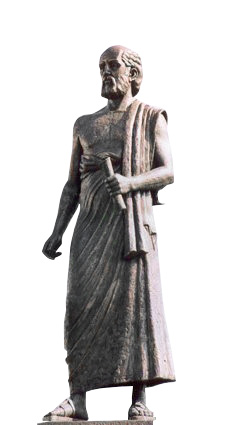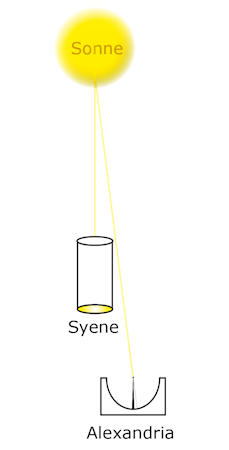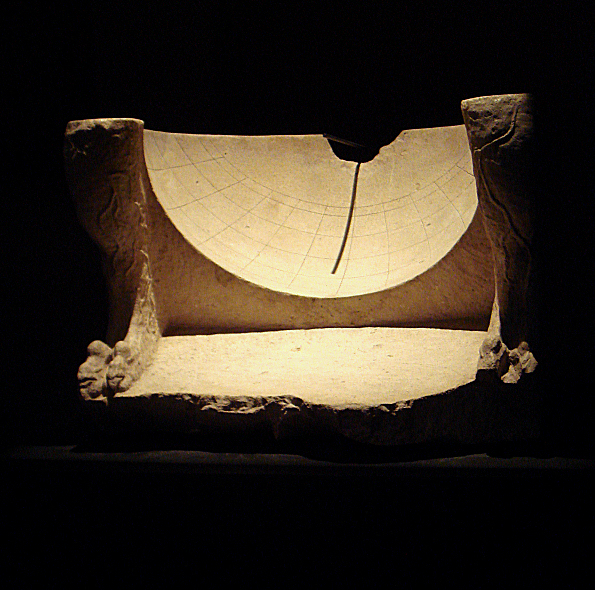The doctrine of the sundial
Today, researching the history of sundials is also part of gnomonics. Like the first use of the sundial, it probably goes back to the Babylonians. However, it reached its peak in Greek and Roman antiquity.
The name Scaphe was coined in the 3rd century BC. The astronomer Aristarchus of Samos, whose hollow ball sundial was designed by the Roman Vitruvius around 30 BC. BC in the ninth of his books on architecture. It is designed as a mirror image of the visible celestial sphere.
Source: Wikipedia
Inventor of the scaphe: Aristarchus of Samos
As early as 250 BC. The Greek philosopher Aristarchus constructed the hollow sphere sundial in the 4th century BC. The scaphe was very popular among the Greeks and stood in many public places.
From his astronomical explorations he concluded that the sun is a stationary pole orbited by the planets.
Around 20 years later, Eratosthenes of Cyrene recognized from the scaphe that the earth is not flat and was even able to calculate the circumference of the earth with amazing accuracy.

Erastothenes' calculation of the circumference of the earth using the scaphe
Eratosthenes observed in the city of Syene (Aswan) how, on one day at the highest point of the sun, the bottom of a deep well was completely illuminated by the sun.
From this he concluded that the sun must be vertical in the sky at that moment.
He then measured the angle of incidence of the sun in Alexandria using the scaph and found that the angle corresponded to 1/50 of the circumference of a circle (7.2 degrees).
Now he could calculate the circumference of the earth, since the distance between Alexandria and Syene had already been measured. His result: The circumference of the earth is around 50 times as long as the distance from Alexandria to Syene.

The development of the sundial
While in the early days of time measurement a simple rod that was inserted into the earth was used to establish a relationship between time and shadows, the sundial continued to develop.
The idea of the hemisphere came with the hollow sphere sundial that Aristarchus used for his scientific calculations. The south-facing part of the spherical shape was not functionally needed.
Even at this time it was possible to calculate the length of a year relatively accurately.
Great scientific progress occurred between the 14th and 15th centuries. The idea of pointing the shadow-casting rod parallel to the Earth's axis made the time scale clearer. The gnomon's shadow was now always the same length, regardless of the season. However, determining the latitude was now even more important, as the angle for aligning the gnomon depends on it.
